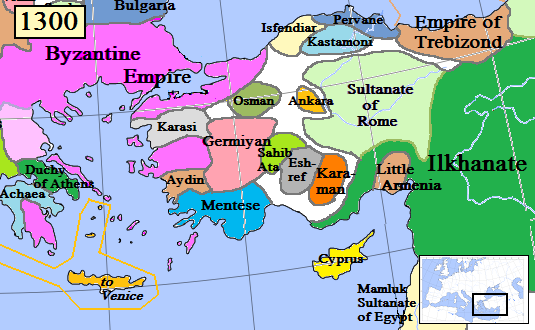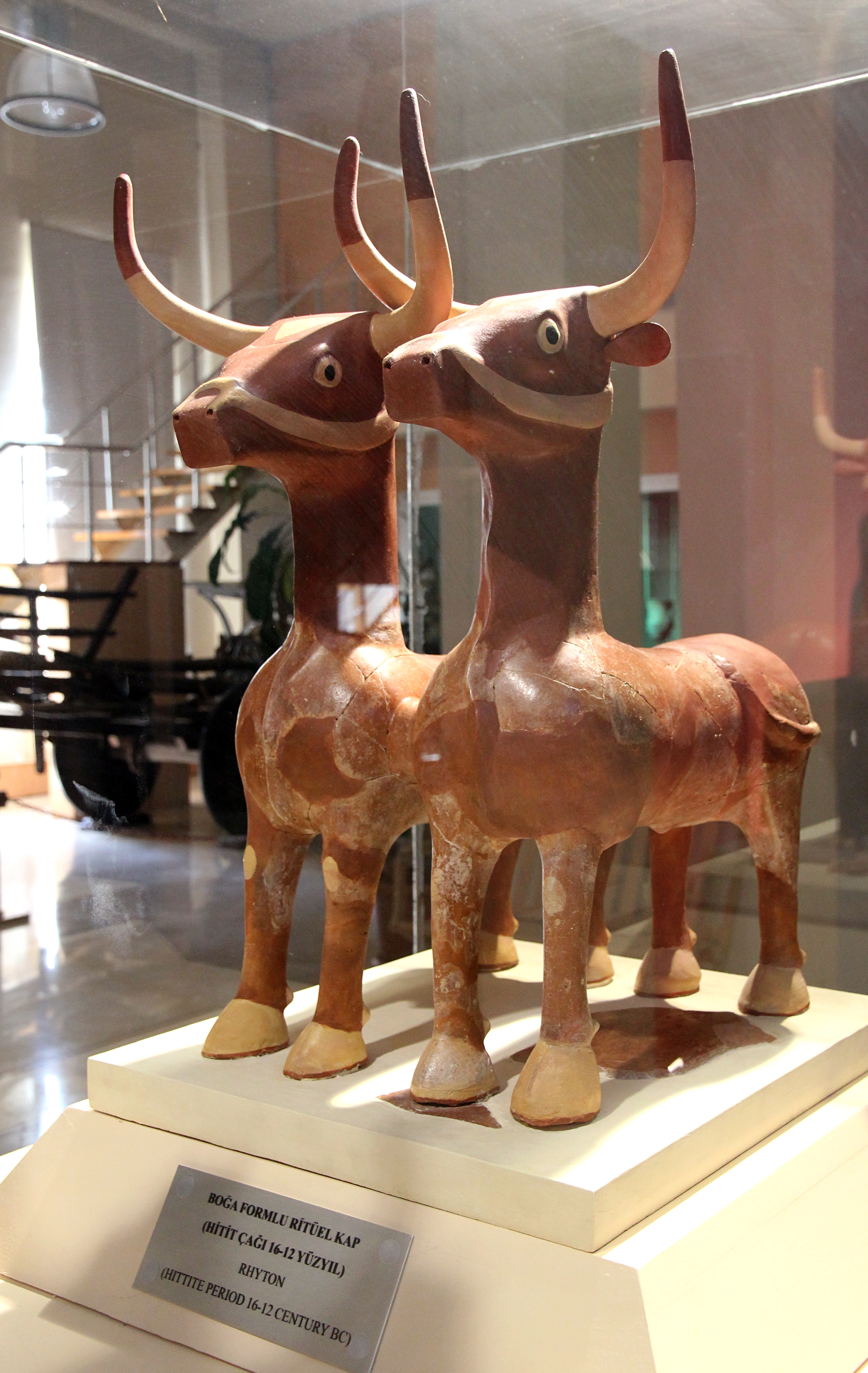|
Karaman Emirate
The Karamanids ( tr, Karamanoğulları or ), also known as the Emirate of Karaman and Beylik of Karaman ( tr, Karamanoğulları Beyliği), was one of the Anatolian beyliks, centered in South-Central Anatolia around the present-day Karaman Province. From the middle 1300s until its fall in 1487, the Karamanid dynasty was one of the most powerful beyliks in Anatolia. History The Karamanids traced their ancestry from Hodja Sad al-Din and his son Nure Sufi Bey, who emigrated from Arran (roughly encompassing modern-day Azerbaijan) to Sivas because of the Mongol invasion in 1230. The Karamanids were members of the Salur tribe of Oghuz Turks. According to Muhsin Yazıcıoğlu and others, they were members of the Afshar tribe,Cahen, Claude, ''Pre-Ottoman Turkey: A General Survey of the Material and Spiritual Culture and History c. 1071–1330'', trans. J. Jones-Williams (New York: Taplinger, 1968), pp. 281–2. which participated in the revolt led by Baba Ishak and afterwards move ... [...More Info...] [...Related Items...] OR: [Wikipedia] [Google] [Baidu] |
Sunni Islam
Sunni Islam () is the largest branch of Islam, followed by 85–90% of the world's Muslims. Its name comes from the word ''Sunnah'', referring to the tradition of Muhammad. The differences between Sunni and Shia Muslims arose from a disagreement over the succession to Muhammad and subsequently acquired broader political significance, as well as theological and juridical dimensions. According to Sunni traditions, Muhammad left no successor and the participants of the Saqifah event appointed Abu Bakr as the next-in-line (the first caliph). This contrasts with the Shia view, which holds that Muhammad appointed his son-in-law and cousin Ali ibn Abi Talib as his successor. The adherents of Sunni Islam are referred to in Arabic as ("the people of the Sunnah and the community") or for short. In English, its doctrines and practices are sometimes called ''Sunnism'', while adherents are known as Sunni Muslims, Sunnis, Sunnites and Ahlus Sunnah. Sunni Islam is sometimes referr ... [...More Info...] [...Related Items...] OR: [Wikipedia] [Google] [Baidu] |
Sivas
Sivas (Latin and Greek: ''Sebastia'', ''Sebastea'', Σεβάστεια, Σεβαστή, ) is a city in central Turkey and the seat of Sivas Province. The city, which lies at an elevation of in the broad valley of the Kızılırmak river, is a moderately-sized trade centre and industrial city, although the economy has traditionally been based on agriculture. Rail repair shops and a thriving manufacturing industry of rugs, bricks, cement, and cotton and woolen textiles form the mainstays of the city's economy. The surrounding region is a cereal-producing area with large deposits of iron ore which are worked at Divriği. Sivas is also a communications hub for the north–south and east–west trade routes to Iraq and Iran, respectively. With the development of railways, the city gained new economic importance as junction of important rail lines linking the cities of Ankara, Kayseri, Samsun, and Erzurum. The city is linked by air to Istanbul. The popular name Sebastian deriv ... [...More Info...] [...Related Items...] OR: [Wikipedia] [Google] [Baidu] |
Kayqubad I
Alā ad-Dīn Kayqubād ibn Kaykhusraw ( fa, علاء الدين كيقباد بن كيخسرو; tr, I. Alâeddin Keykûbad, 1190–1237), also known as Kayqubad I, was the Seljuq Sultan of Rûm who reigned from 1220 to 1237. He expanded the borders of the sultanate at the expense of his neighbors, particularly the Mengujek Beylik and the Ayyubids, and established a Seljuq presence on the Mediterranean with his acquisition of the port of Kalon Oros , later renamed Ala'iyya in his honor. The sultan, sometimes styled Kayqubad the Great, is remembered today for his rich architectural legacy and the brilliant court culture that flourished under his reign. Kayqubad's reign represented the apogee of Seljuq power and influence in Anatolia, and Kayqubad himself was considered the most illustrious prince of the dynasty. In the period following the mid-13th century Mongol invasion, inhabitants of Anatolia frequently looked back on his reign as a golden age, while the new rulers o ... [...More Info...] [...Related Items...] OR: [Wikipedia] [Google] [Baidu] |
Sultanate Of Rûm
fa, سلجوقیان روم () , status = , government_type = Hereditary monarchyTriarchy (1249–1254) Diarchy (1257–1262) , year_start = 1077 , year_end = 1308 , p1 = Byzantine Empire under the Doukas dynastyByzantine Empire , p2 = Seljuk Empire , p3 = Danishmends , p4 = Mengujekids , p5 = Saltukids , p6 = Artuqids , s1 = Anatolian beyliks , s2 = Ilkhanate, , event_pre = Battle of Manzikert , date_pre = 1071 , event_start = Division from the Seljuk Empire , event1 = Battle of Köse Dağ , date_event1 = 1243 , event_end = Karamanid conquest , image_flag = Double-headed eagle of the Sultanate of Rum.svg , flag_size = 100px , flag_type ... [...More Info...] [...Related Items...] OR: [Wikipedia] [Google] [Baidu] |
Cilicia
Cilicia (); el, Κιλικία, ''Kilikía''; Middle Persian: ''klkyʾy'' (''Klikiyā''); Parthian language, Parthian: ''kylkyʾ'' (''Kilikiyā''); tr, Kilikya). is a geographical region in southern Anatolia in Turkey, extending inland from the northeastern coasts of the Mediterranean Sea. Cilicia has a population ranging over six million, concentrated mostly at the Cilicia plain. The region includes the provinces of Mersin Province, Mersin, Adana Province, Adana, Osmaniye Province, Osmaniye, along with parts of Hatay Province, Hatay and Antalya Province, Antalya. Geography Cilicia is extended along the Mediterranean Sea, Mediterranean coast east from Pamphylia to the Nur Mountains, which separates it from Syria. North and east of Cilicia lie the rugged Taurus Mountains that separate it from the high central plateau of Anatolia, which are pierced by a narrow gorge called in antiquity the Cilician Gates. Ancient Cilicia was naturally divided into Cilicia Trachea and Cilicia Pedi ... [...More Info...] [...Related Items...] OR: [Wikipedia] [Google] [Baidu] |
Kerîmeddin Karaman Bey
Kerîmeddin Karaman Beg (Turkish) (Arabic: كريم ٱلدين Karīm al-Dīn Karaman Bey), sometimes Karaman Bey, was a Turkish chief founder of the dynasty Karaman-oğhlu or Karamanoğulları, a Turkish principality in Anatolia in the 13th century. The province and city of Larandia was renamed Karaman in his honor. He is well known for waging wars against the Byzantine Empire. Early life He was the son of Nûre Sûfî Bey, a Turkish leader from Arran, who established himself in the Taurus Mountains near Larandia and who became a Seljuk vassal. Some time before 1256, Karaman Bey officially succeeded his father (who had already left him the effective power several years prior in order to pursue a life in seclusion). In about 1260 Karaman makes his first appearance in the Isaurian-Cilician Taurus regions. Although the points of detail can probably never be determined, it can be accepted that Karaman started life as a woodcutter and timber merchant who brought supplies fr ... [...More Info...] [...Related Items...] OR: [Wikipedia] [Google] [Baidu] |
Seljuks
The Seljuk dynasty, or Seljukids ( ; fa, سلجوقیان ''Saljuqian'', alternatively spelled as Seljuqs or Saljuqs), also known as Seljuk Turks, Seljuk Turkomans "The defeat in August 1071 of the Byzantine emperor Romanos Diogenes by the Turkomans at the battle of Malazgirt (Manzikert) is taken as a turning point in the history of Anatolia and the Byzantine Empire. or the Saljuqids, was an Oghuz Turkic, Sunni Muslim dynasty that gradually became Persianate and contributed to the Turco-Persian tradition in the medieval Middle East and Central Asia. The Seljuks established the Seljuk Empire (1037-1194), the Sultanate of Kermân (1041-1186) and the Sultanate of Rum (1074-1308), which at their heights stretched from Iran to Anatolia, and were the prime targets of the First Crusade. Early history The Seljuks originated from the Kinik branch of the Oghuz Turks, who in the 8th century lived on the periphery of the Muslim world, north of the Caspian Sea and Aral Sea in their Og ... [...More Info...] [...Related Items...] OR: [Wikipedia] [Google] [Baidu] |
Taurus Mountains
The Taurus Mountains (Turkish language, Turkish: ''Toros Dağları'' or ''Toroslar'') are a mountain range, mountain complex in southern Turkey, separating the Mediterranean Region, Turkey, Mediterranean coastal region from the central Anatolia#Anatolian plateau, Anatolian Plateau. The system extends along a curve from Lake Eğirdir in the west to the upper reaches of the Euphrates and Tigris rivers in the east. It is a part of the Alpide belt in Eurasia. Etymology The mountain range under the current name was mentioned in The Histories (Polybius), ''The Histories'' by Polybius as Ταῦρος (''Taûros''). Heinrich Kiepert writes in ''Lehrbuch der alten Geographie'' that the name was borrowed into Ancient Greek from the Semitic languages, Semitic (Old Aramaic) root טורא ''ṭūrā'', meaning "mountain". Geography The Taurus mountains are divided into three chains from west to east as follows; * Western Taurus (Batı Toroslar) *Central Taurus (Orta Toroslar) *Southeaster ... [...More Info...] [...Related Items...] OR: [Wikipedia] [Google] [Baidu] |
Baba Ishak
Baba Ishak, also spelled Baba Ishāq, Babaî, or Bābā’ī, a charismatic preacher, led an uprising of the Turkoman of Anatolia against the Seljuq Sultanate of Rûm well known as Babai Revolt ''c.'' 1239 until he was hanged in 1241. Balcıoğlu, Tahir Harimî, ''Türk Tarihinde Mezhep Cereyanları - The course of madh'hab events in Turkish history,'' (Preface and notes by Hilmi Ziya Ülken), 271 pages, Ahmet Sait Press, Kanaat Publications, Istanbul, 1940. Background It had a become a common practice on Turk lands under the Seljuk reign for these "baba's" to spread their "aggregated band of religiosity under the apparent guise of Sufism". "Their extra-Islamic beliefs and non-shari'atic practices had a major influence on Turkish masses, especially those who had remained superficially-Islamized Muslims. It was for the same reasons and in the same regions that these non-orthodox Sufis set out a series of clashes against orthodox Sunnite authorities". "Since the emergence of Babas, ... [...More Info...] [...Related Items...] OR: [Wikipedia] [Google] [Baidu] |
Afshar Tribe
Afshar ( az, Əfşar افشار; tr, Avşar, ''Afşar''; tk, Owşar; fa, اَفشار, Āfshār) is a tribe of Oghuz Turkic origin, that split into several groups in Iran, Turkey and Afghanistan. During the Seljuk conquests of the 11th century, they moved from Central Asia into the Middle East. They are noted in history for being one of the Qizilbash tribes that helped establish the Safavid dynasty of Iran, and for being the source of descent of Iran's Afsharid dynasty. Nader Shah, who became the monarch of Iran in 1736, was from the Qereklu tribe ( fa, قرخلو) of Afshars. Afshars mainly inhabit Iran, where they remain a largely nomadic group. Today, the Afshars are variously grouped as a branch of the Azerbaijanis and Turkmens or Turkomans (a common general term used for people of Oghuz Turkic origin). The founders of the Germiyanids, Baku Khanate, Zanjan Khanate, Khalkhal Khanate, and Urmia Khanate were also of Afshar descent. The founder of the Karamanids may h ... [...More Info...] [...Related Items...] OR: [Wikipedia] [Google] [Baidu] |
Muhsin Yazıcıoğlu
Muhsin Yazıcıoğlu (December 31, 1954 – March 25, 2009) was a Turkish politician and member of the Parliament of Turkey. He was the leader and founder of the Great Union Party (BBP), a right-wing, nationalist-Islamist political party. Biography Yazıcıoğlu was born 1954 in a small village named Elmalı in Şarkışla of Sivas Province. He studied in Şarkışla from primary school to high school after that he was educated at the Faculty of Veterinary Medicine in Ankara University. He was a member of Grey Wolves struggling for nationalism during the 1970s. After 1980 Turkish coup d'état, he was arrested for being one of the leaders of Grey Wolves. He stayed for 7 years in prison. After the years of imprisonment, he was released in 1987 by being cleared of blame. In the following years, he involved in politics under Nationalist Movement Party. In 1991, he and some of his fellows left this movement and established a new political party called Great Union Party next y ... [...More Info...] [...Related Items...] OR: [Wikipedia] [Google] [Baidu] |





